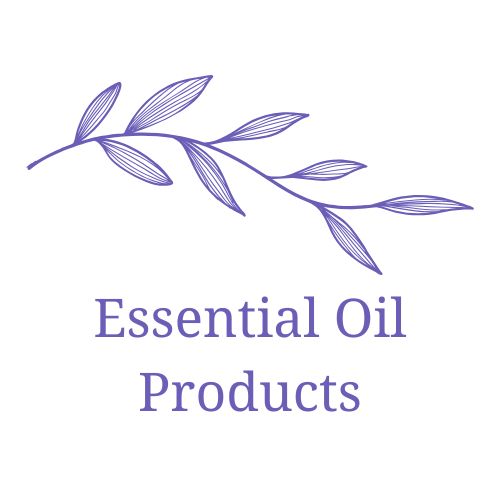Your cart is currently empty!
Emerging Trends in Professional Aromatherapy: Innovations and Applications
Emerging Trends in Professional Aromatherapy: Innovations and Applications
The field of aromatherapy has seen a significant evolution in recent years, drawing interest from various sectors like health care, wellness, and beauty. As consumer interest surges, so do the innovations and applications of aromatherapy practices. This article delves into current and emerging trends in professional aromatherapy, exploring their implications across multiple industries and highlighting the pathways to becoming a qualified aromatherapist in this vibrant field.
The Rise of Professional Aromatherapy
Aromatherapy, the therapeutic use of essential oils derived from plants, has transitioned from a niche holistic practice to a widely recognized profession. With increasing awareness of holistic health practices, professionals across different fields are incorporating aromatherapy into their repertoire. Objectives range from improving mental well-being to enhancing physical health through the use of these highly concentrated plant extracts.
Professional aromatherapy practices now include individualized consultations, personalized essential oil blends, and innovative products aimed at specific therapeutic goals. This evolving landscape indicates a promising future characterized by specialized applications in clinical, wellness, and spa settings. As the evidence base for efficacy strengthens, regulatory bodies are paying more attention to the standards and qualifications needed for practitioners.
Innovations in Aromatherapy
As we enter an era characterized by rapid innovations, the aromatherapy industry is no exception. Emerging trends highlight advancements in both product formulations and applications. One notable trend is the development of complex essential oil blends tailored for specific therapeutic purposes.
Customized Essential Oil Blends
There is a growing emphasis on creating customized essential oil blends that address individual health challenges. Practitioners now use comprehensive methods such as detailed client evaluations and symptom assessments to create these tailored formulations. For instance, a blend for stress relief might include oils like lavender, bergamot, and chamomile chosen for their synergistic effects.
Integration of Technology
The integration of technology into aromatherapy practices is another exciting trend. Innovations such as diffusion devices that can be controlled via apps allow for precise control over essential oil dispersion, enhancing the aromatherapy experience. Furthermore, new research technologies help analyze the compounds within essential oils, providing insights into their therapeutic properties and paving the way for more targeted applications.
Essential Oil Trends: What’s New?
With various essential oils capturing attention for their unique benefits, several trends have emerged in the types of oils being utilized within professional practices. Some of these trends include:
- Adaptogens: Essential oils derived from adaptogenic plants, such as Ashwagandha and Rhodiola, are gaining popularity in aromatherapy due to their perceived stress-relieving properties.
- Botanical Extracts: Beyond traditional essential oils, botanical extracts like flower essences and CO2 extractions are being integrated into therapeutic practices for their unique profiles.
- Local Sourcing: There is a rising trend to source essential oils locally, promoting sustainability and reducing the carbon footprint associated with transportation.
Aromatherapy in Clinical and Spa Settings
One of the most significant applications of professional aromatherapy is within clinical and spa settings. In hospitals and rehabilitation facilities, aromatherapy is increasingly being recognized as a complementary therapy. Research indicates that incorporating essential oils can help reduce anxiety, improve sleep, and enhance overall patient satisfaction.
Clinical Applications
Clinical aromatherapy often involves the use of specific oils in conjunction with mainstream medical treatments. For example, studies have shown that essential oils like peppermint can help alleviate nausea during chemotherapy. Moreover, aromatherapy has been embraced in palliative care as a means to enhance comfort and relieve emotional distress.
Spa Integrations
In spa settings, aromatherapy treatments are continually evolving to provide customers with enhanced relaxation and rejuvenation experiences. Massages, facials, and wellness rituals now frequently include essential oil applications customized to individual preferences or goals. Notably, the rise of aromatherapy-infused products—such as bath oils, candles, and skincare items—has transformed how people interact with these natural substances in their daily lives.
Qualification Paths for Aromatherapists
As the demand for professional aromatherapists grows, so does the need for proper training and qualifications. Many aspiring practitioners now seek accredited programs that provide comprehensive instruction on various aspects of aromatherapy.
Educational Standards
Educational pathways vary, but most programs emphasize a robust foundation in essential oil chemistry, human anatomy, and the ethical considerations of aromatherapy practices. Certification programs often follow guidelines set forth by national and international organizations, such as the National Association for Holistic Aromatherapy.
Continuing Education and Specializations
In a field characterized by continual evolution, ongoing education is essential for professional growth. Practitioners are encouraged to pursue specialized training in areas such as clinical aromatherapy, cosmetic formulation, or counselling techniques. By staying informed about the latest research and trends, aromatherapists can refine their practice and enhance their ability to serve clients effectively.
Global Perspectives on Aromatherapy
Aromatherapy is not confined to Western practices; its global applications span multiple cultures. Traditional methods from different regions inform contemporary practices, resulting in a rich tapestry of techniques that can be integrated into professional aromatherapy.
For example, countries like Japan embrace a holistic integration of essential oils within traditional medicine, while aromatherapy practices in the Middle East often incorporate cultural rituals that enhance the therapeutic experience. These diverse approaches not only broaden the perspective of what aromatherapy can achieve but also pave the way for innovative practices tailored to a global clientele.
Conclusion: What Lies Ahead in Aromatherapy?
As we investigate the dynamic landscape of professional aromatherapy, it’s clear that the industry is ripe with opportunities for growth, innovation, and enhanced therapeutic applications. With advancements in technology and an ever-deepening understanding of essential oils, practitioners are well-equipped to address the diverse needs of their clients. The future of aromatherapy shines brightly, emerging as a respected component of holistic health care across various sectors.

Leave a Reply